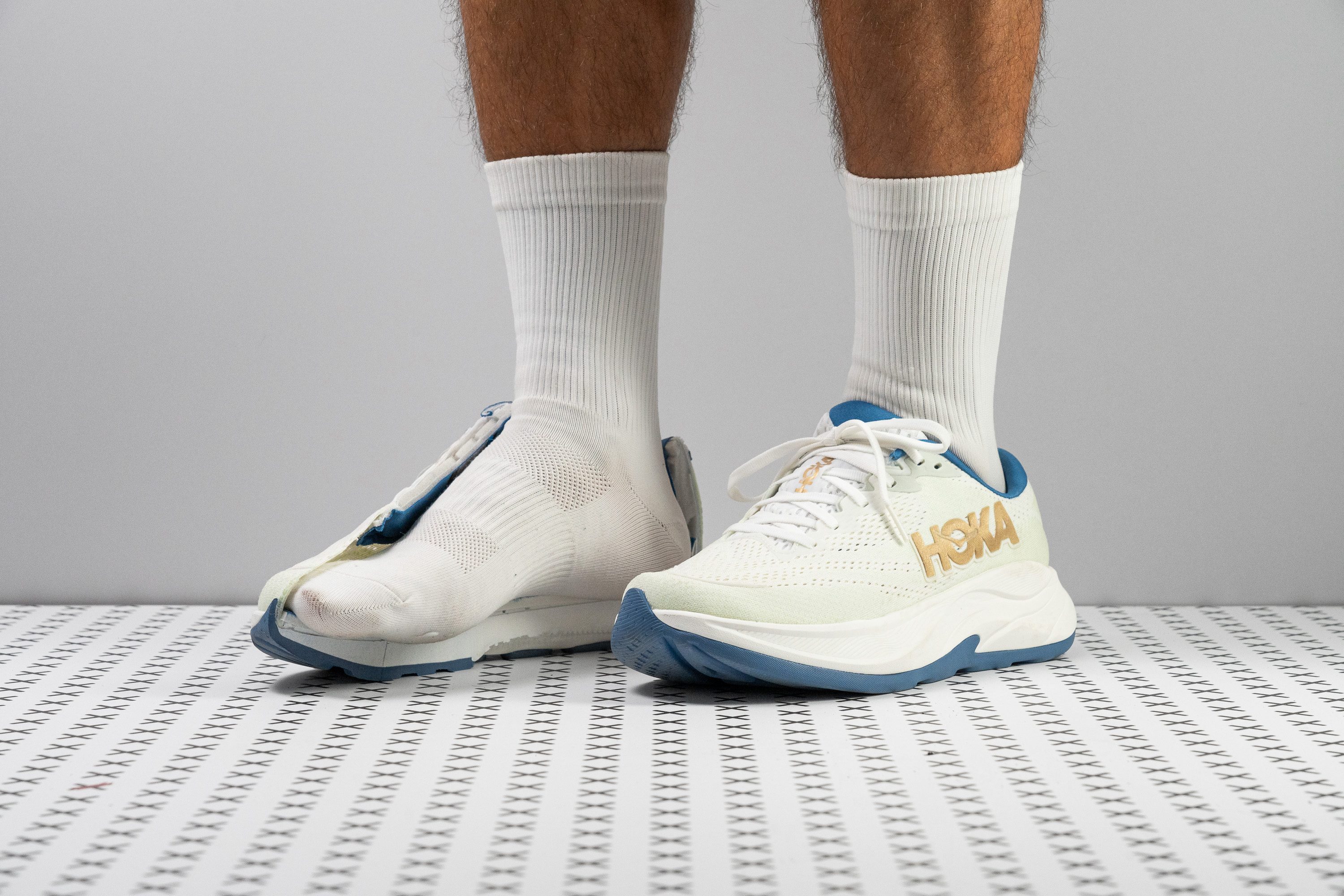Nuestra conclusión
Pros
- Precio razonable
- Estabilidad mejorada
- Mediasuela mejorada respecto a la v3
- Muy transpirables
- Siguen siendo ligeras
- Suela más alta
- Adecuadas para las actividades del día a día
- Buen agarre
Contras
- Poco duraderas
- Upper con un volumen vertical bajo
- Ahora pesan más
Veredicto de los usuarios
- Top 24% más vendidas zapatillas de running
Comparativa
Las zapatillas de running más parecidas
+ + Añadir unas zapatillas | |||||
|---|---|---|---|---|---|
| Puntuación global | 80 Buenas | 88 Notables | 85 Buenas | 85 Buenas | |
| Precio | 130 € | 180 € | 160 € | 160 € | |
| Pace | Correr a diario | Correr a diario | Correr a diario | Correr a diario | |
| Absorción de impactos | Alta | - | Moderada | - | |
| Retorno de energía | Moderado | - | Moderado | - | |
| Tracción | Alta | - | Alta | - | |
| Arch support | Estabilidad | Estabilidad | Estabilidad | Estabilidad | |
| Peso laboratorio Peso marca | 8.1 oz / 231g 8 oz / 228g | 11.6 oz / 329g 11.8 oz / 334g | 10.4 oz / 295g 10.5 oz / 298g | 12.5 oz / 353g 12.2 oz / 346g | |
| Lightweight | ✓ | ✗ | ✗ | ✗ | |
| Drop laboratorio Drop marca | 9.4 mm 5.0 mm | 7.2 mm 8.0 mm | 9.3 mm 8.0 mm | 12.1 mm 12.0 mm | |
| Técnica de carrera | TalónMedio/antepié | TalónMedio/antepié | TalónMedio/antepié | Talón | |
| Talla | Tallan un poquito pequeño | Tallan un poquito pequeño | Tallan un poquito pequeño | Tallan un poquito pequeño | |
| Rigidez de la mediasuela | Blanda | Equilibrada | Blanda | Firme | |
| Diferencia de la rigidez de la mediasuela en frío | Grande | Normal | Grande | Pequeña | |
| Durabilidad de la parte delantera | Mala | Decente | Decente | Decente | |
| Durabilidad del acolchado del talón | Media | Baja | Baja | Alta | |
| Durabilidad de la suela exterior | Mala | Buena | Decente | Buena | |
| Transpirabilidad | Alta | Media | Media | Media | |
| Anchura / ajuste | Estrecha | Media | Media | Media | |
| Anchura de la parte delantera | Estrecha | Ancha | Media | Media | |
| Flexibilidad | Moderada | Rígida | Moderada | Rígida | |
| Rigidez torsional | Rígidas | Rígidas | Moderadas | Rígidas | |
| Rigidez del contrafuerte del talón | Rígido | Rígido | Rígido | Moderado | |
| Rocker | ✓ | ✗ | ✗ | ✗ | |
| Talón laboratorio Talón marca | 36.0 mm 33.0 mm | 39.1 mm 41.0 mm | 36.8 mm 38.0 mm | 36.5 mm 36.0 mm | |
| Antepié laboratorio Antepié marca | 26.6 mm 28.0 mm | 31.9 mm 33.0 mm | 27.5 mm 30.0 mm | 24.4 mm 24.0 mm | |
| Anchuras disponibles | EstándarAncho | EstándarAncho | EstrechoEstándarAnchoExtra Ancho | EstrechoEstándarAnchoExtra Ancho | |
| Orthotic friendly | ✓ | ✓ | ✓ | ✓ | |
| Estación | VeranoTodas las estaciones | Todas las estaciones | Todas las estaciones | Todas las estaciones | |
| Removable insole | ✓ | ✓ | ✓ | ✓ | |
| Clasificación | #308 17% inferior | #137 Top 37% | #215 42% inferior | #220 41% inferior | |
| Popularidad | #87 Top 24% | #281 25% inferior | #32 Top 9% | #187 Top 50% |
Quién debería comprárselas
Les hemos metido mucha caña a las Hoka Rincon 4, así que estamos encantados de poder recomendárselas a:
- Los recién llegados a Hoka que están un par asequible con el que empezar en esta marca. Además, es lo suficientemente versátil como para caminar o ir al gimnasio si te apetece correr con él.
- Los que querían más amortiguación en las versiones anteriores ya que esta tiene una suela alta que mejora la comodidad en las carreras largas.
- Los corredores que necesitan una sujeción moderada a un precio razonable. Estas zapatillas se adaptan a varios ritmos sin problemas, por lo que son adecuadas para necesidades distintas al entrenar.
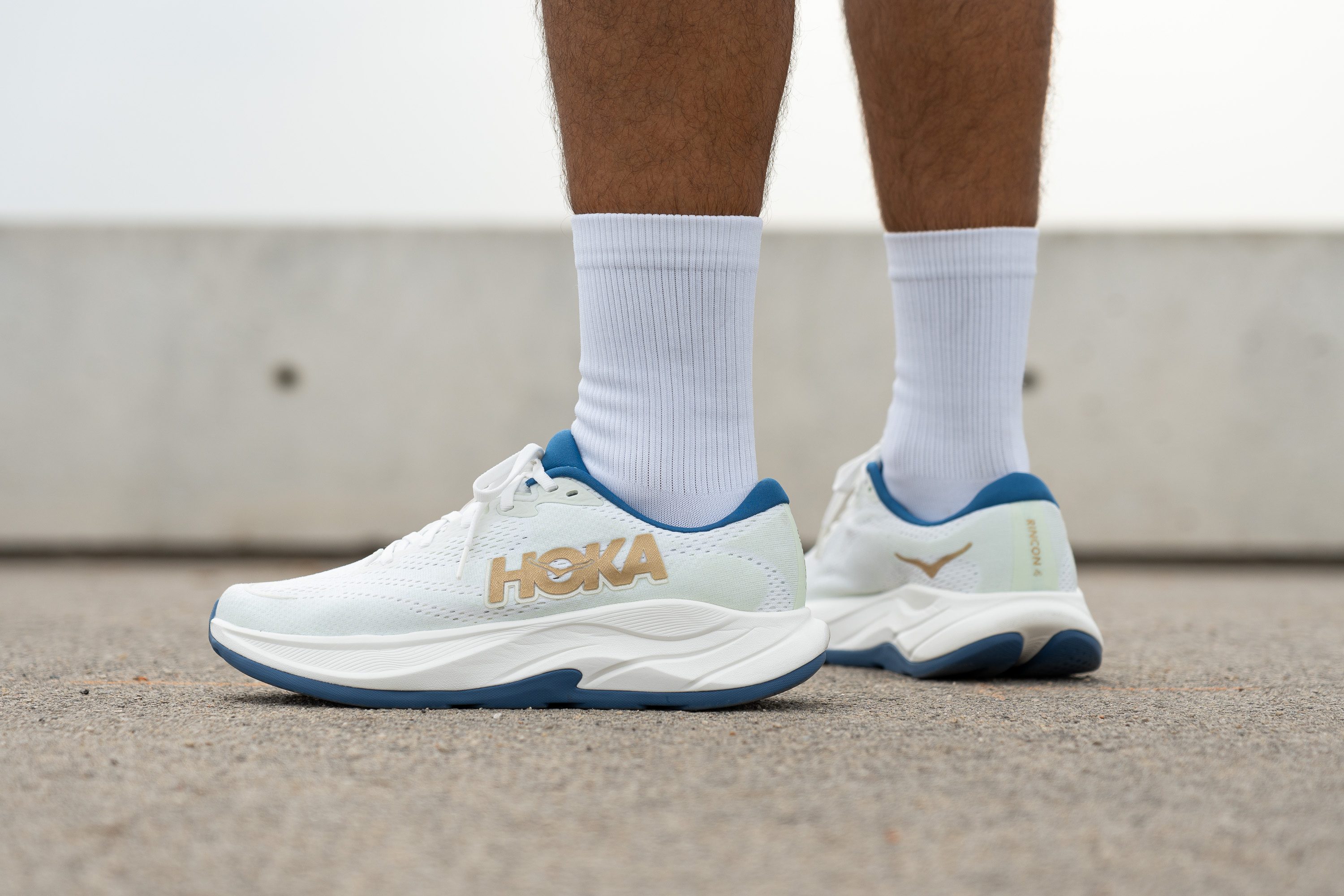
Quién NO debería comprárselas
Descubrimos que la parte delantera de las Rincon 4 puede no ser ideal para los que prefieren las zapatillas espaciosas o con mucho volumen, ya que se estrecha un poco más de lo habitual y ofrece menos volumen en el interior. Si esto te parece un problema, te recomendamos que le eches un ojo a las ASICS GT 2000 12, una opción fiable de estabilidad moderada que tiene un ajuste espacioso y un mayor volumen vertical.
Eso sí, hay una cosa que nos preocupa mucho en las Rincon 4, y es su durabilidad. Si eres de los que suelen desgastar las zapatillas muy rápido, mejor pasa de ellas. Las Saucony Guide 17 y las Brooks Launch GTS 10 son bastante más duraderas, e incluso ofrecen una mejor estabilidad bajo los pies.
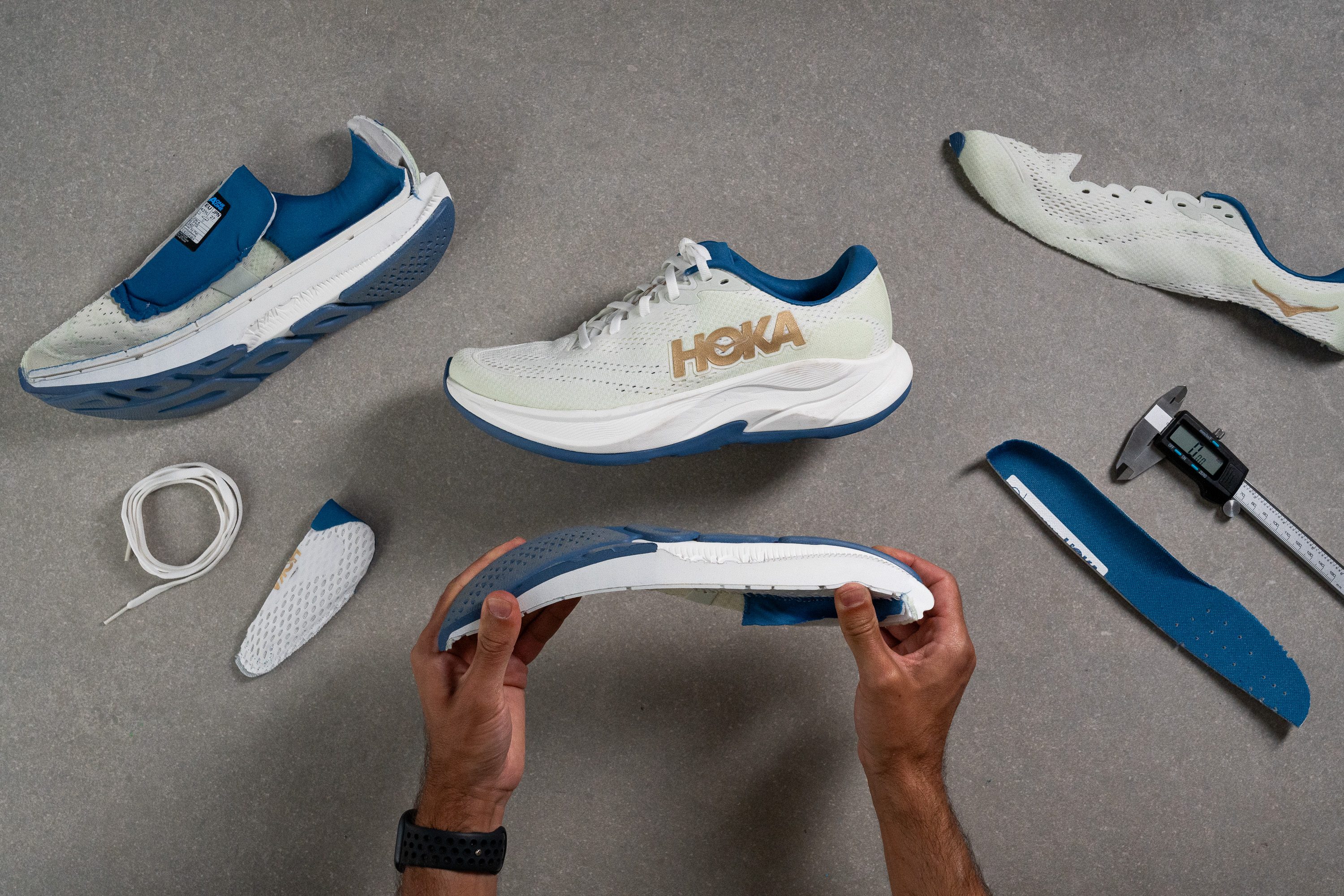
Amortiguación
Shock absorption
Las Rincon 4 ahora ofrecen una absorción de impactos excelente, alcanzando 134 SA en el talón y 114 SA en el antepié. Estas cifras tan sólidas hacen que la versión 4 sea una excelente opción para las distancias largas.

| Hoka Rincon 4 | 134 SA |
| Media | 129 SA |
Energy return
Una de nuestras mayores quejas sobre la versión 3 fue su decepcionante retorno de energía, pero la versión 4 consigue arreglarlo. Con un 56,4 % en el talón y un 58,8 % en el antepié, supera por mucho a sus predecesoras.
| Hoka Rincon 4 | 56.4% |
| Media | 58.5% |
Altura de la suela en la zona del talón
Afortunadamente, descubrimos rápido de dónde venía este peso extra. Usando nuestros calibres, vimos que la altura de la suela en el talón de las Rincon 4 llegaba a los 36,0 mm, un aumento significativo respecto a los 31,8 mm de la versión anterior.
Esta mejora es beneficiosa para casi todos los corredores, sobre todo en distancias largas. Entre ellos, los talonadores son los que más contentos estarán con la amortiguación extra.
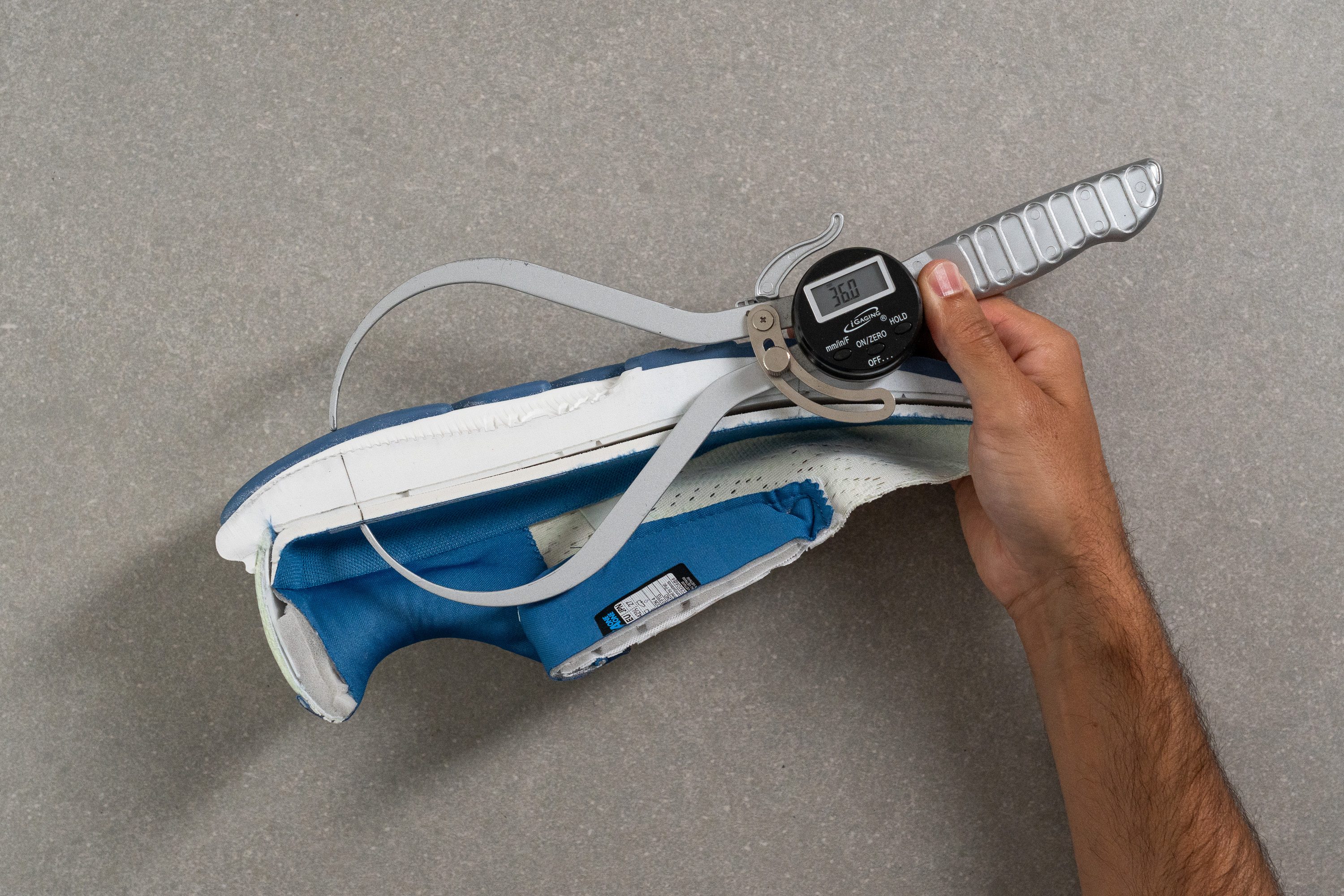
| Hoka Rincon 4 | 36.0 mm |
| Media | 34.8 mm |
Altura de la suela en el antepié
El antepié de las Rincon 4 es un poco más fino de lo esperado, con 26,6 mm, pero sigue teniendo la amortiguación suficiente para unas zapatillas de entrenamiento diario equilibradas, encajando perfectamente con lo que se espera el público al que van dirigidas. Por lo tanto, creemos que también son una buena opción para los corredores de metatarsos y de mediopié, ¡sin problema!
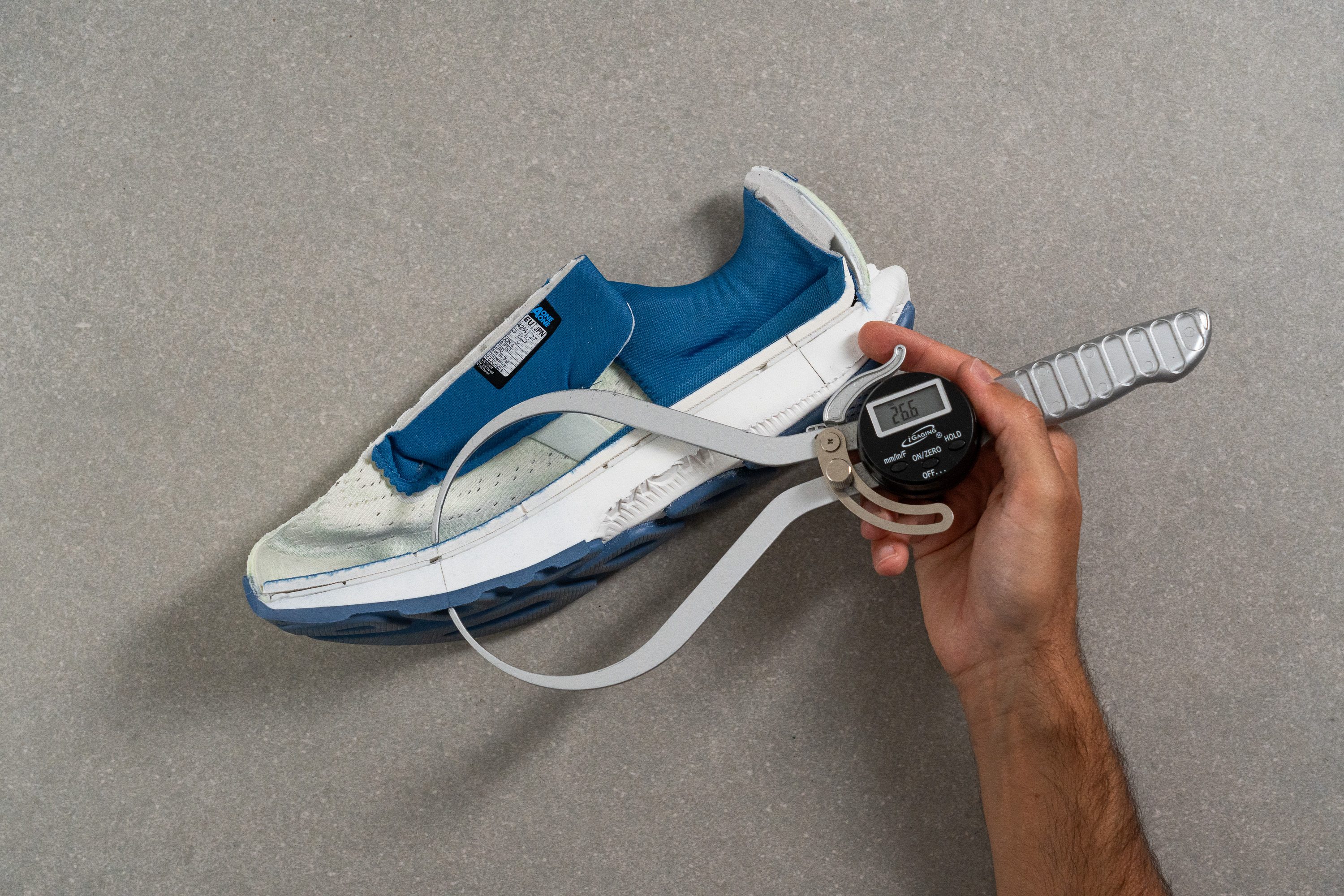
| Hoka Rincon 4 | 26.6 mm |
| Media | 26.2 mm |
Drop
Nuestro análisis de las Rincon 4 reveló un drop de 9,4 mm, que es bastante más alto que el drop de 5 mm que la marca dice que tienen.

Si estas diferencias te llaman la atención, te animamos a que le eches un ojo a nuestra guía. En ella te explicamos por qué el drop de las marcas puede ser distinto de las mediciones que obtenemos en nuestro laboratorio, que se ajustan a las directrices de la World Athletics.
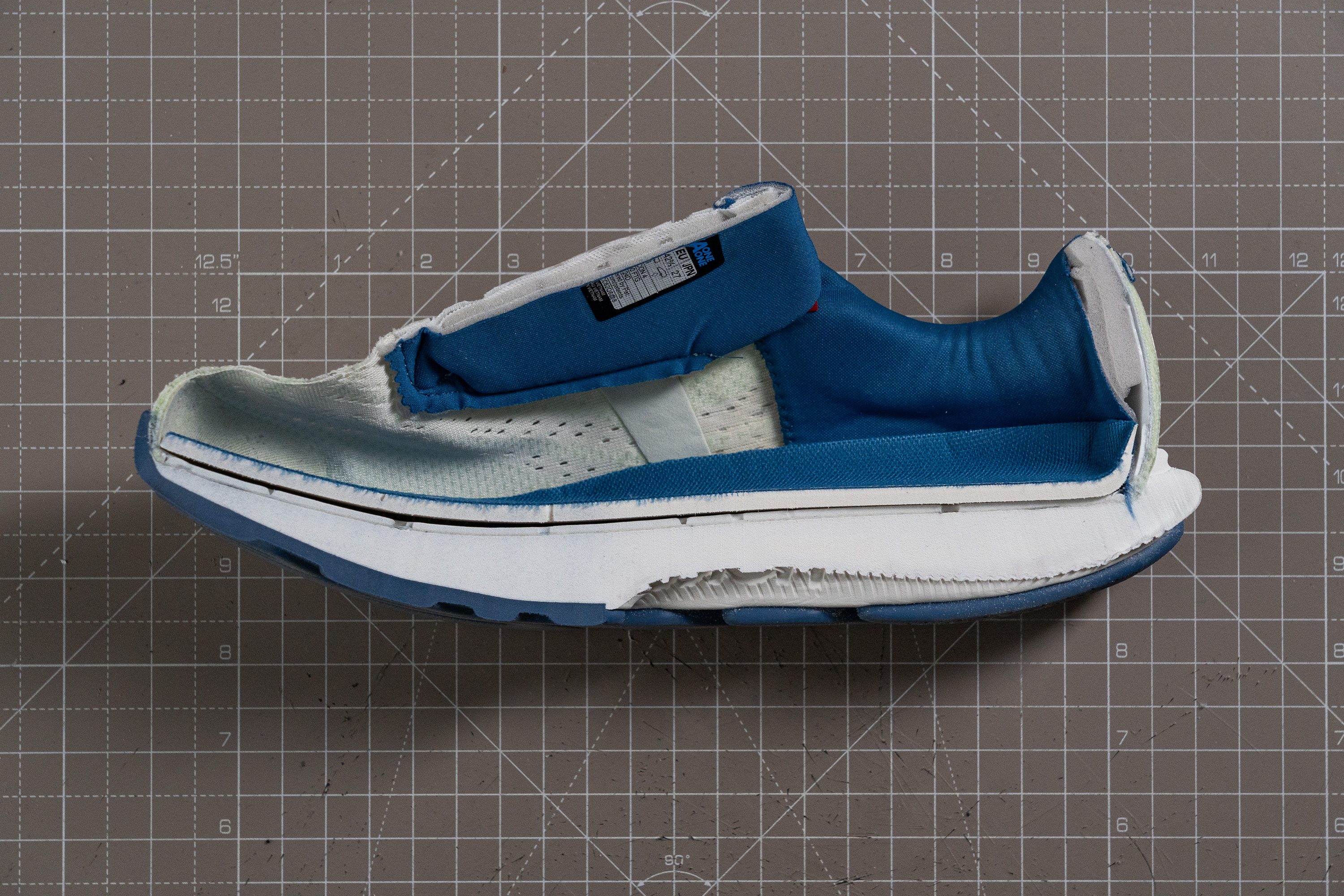
| Hoka Rincon 4 | 9.4 mm |
| Media | 8.6 mm |
Suavidad de la mediasuela
Una de las críticas más frecuentes de los fans de Hoka a las Rincon 3 fue que se sentían firmes al pisar, ya que nuestro durómetro marcó 23,4 HA cuando lo presionamos contra su mediasuela. Pero las Rincon 4 solucionan este problema con una espuma EVA supercrítica, que obtuvo un resultado de 14,3 HA en nuestro durómetro, mejorando así tanto el rebote como la suavidad.
¿Qué significa esta mejora? Pues a ver, básicamente, sigue siendo EVA, pero ahora es mucho más flexible y reactiva que la de sus predecesoras, lo que supone una mejora importante. Aunque la estabilidad puede verse ligeramente comprometida, ya que la espuma es más blanda, creemos que la compensación para conseguir una mayor comodidad merece la pena.

| Hoka Rincon 4 | 14.3 HA |
| Media | 20.4 HA |
Rocker
Hoka, queremos felicitarte por el sutil diseño del rocker de estas zapatillas, ya que es justo lo que necesitan para que la pisada sea eficiente y divertida. En nuestra opinión, ponerles un rocker más pronunciado a unas zapatillas que carecen de rigidez longitudinal habría sido un error importante.
Tallaje y ajuste
Talla
Las Hoka Rincon 4 quedan un poco pequeñas (127 votos).
Anchura / Ajuste
Hoka es conocida por sus modelos estrechos, pero las Rincon siempre han sido una de las mejores opciones para las personas que están buscando un ajuste más espacioso dentro de esta marca. Esta cuarta versión rompe un poco con esta tendencia ya que, aunque sigue siendo más espaciosa que la mayoría de las Hoka, es más estrecha que la media.
Cuando medimos el punto más ancho de la zona de los dedos, nuestro calibre marcó 92,4 mm; una cifra que está claramente por debajo de la anchura típica de las zapatillas de running.

| Hoka Rincon 4 | 92.4 mm |
| Media | 95.1 mm |
Anchura de la parte delantera
Cuando medimos la anchura de nuestro molde de gel en la zona del dedo gordo, nuestro calibre marcó 70,2 mm. Por lo tanto, la parte delantera se estrecha bruscamente; un diseño característico de Hoka que, la verdad, ya nos esperábamos. Aunque claro, esto significa que no hay mucho espacio para separar los dedos.

| Hoka Rincon 4 | 70.2 mm |
| Media | 73.2 mm |
Altura de la parte delantera
Cuando medimos la altura de la zona de los dedos, nuestro calibre marcó 25,2 mm; una vez más, una cifra muy por debajo de la media.
En nuestra opinión, estas zapatillas están diseñadas, claramente, para los corredores con pies poco voluminosos.
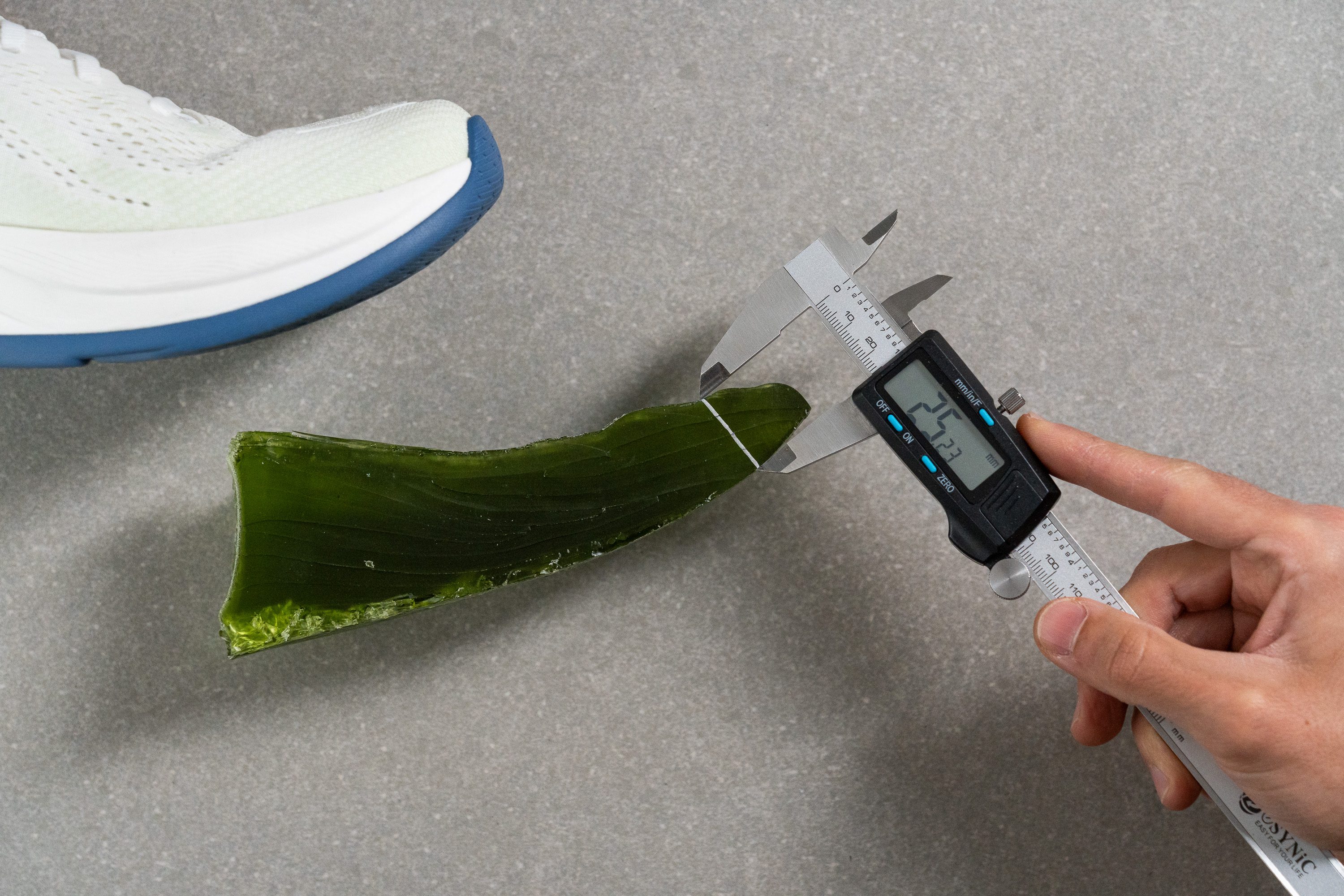
| Hoka Rincon 4 | 25.2 mm |
| Media | 27.1 mm |
Tracción / Agarre
Traction test
Sometimos a las Rincon 4 a nuestra prueba de tracción sobre mojado y se llevaron un 0,46. La verdad es que es un resultado sólido para su precio, superando incluso a las Hoka Bondi 9, que son más caras.
Gracias a este nivel de agarre, puedes esperar la máxima tracción en asfalto seco y una estabilidad suficiente en mojado, así que las Rincon 4 no son una mala opción en la mayoría de los casos.
| Hoka Rincon 4 | 0.46 |
| Media | 0.48 |
Diseño de la suela exterior
Estas Hoka cuentan con una suela exterior basada en espuma EVA, que es algo que solo hemos visto en unos pocos modelos, como las ASICS Cumulus 26. La posible falta de durabilidad es que lo hace que este material no se vea mucho en las zapatillas.
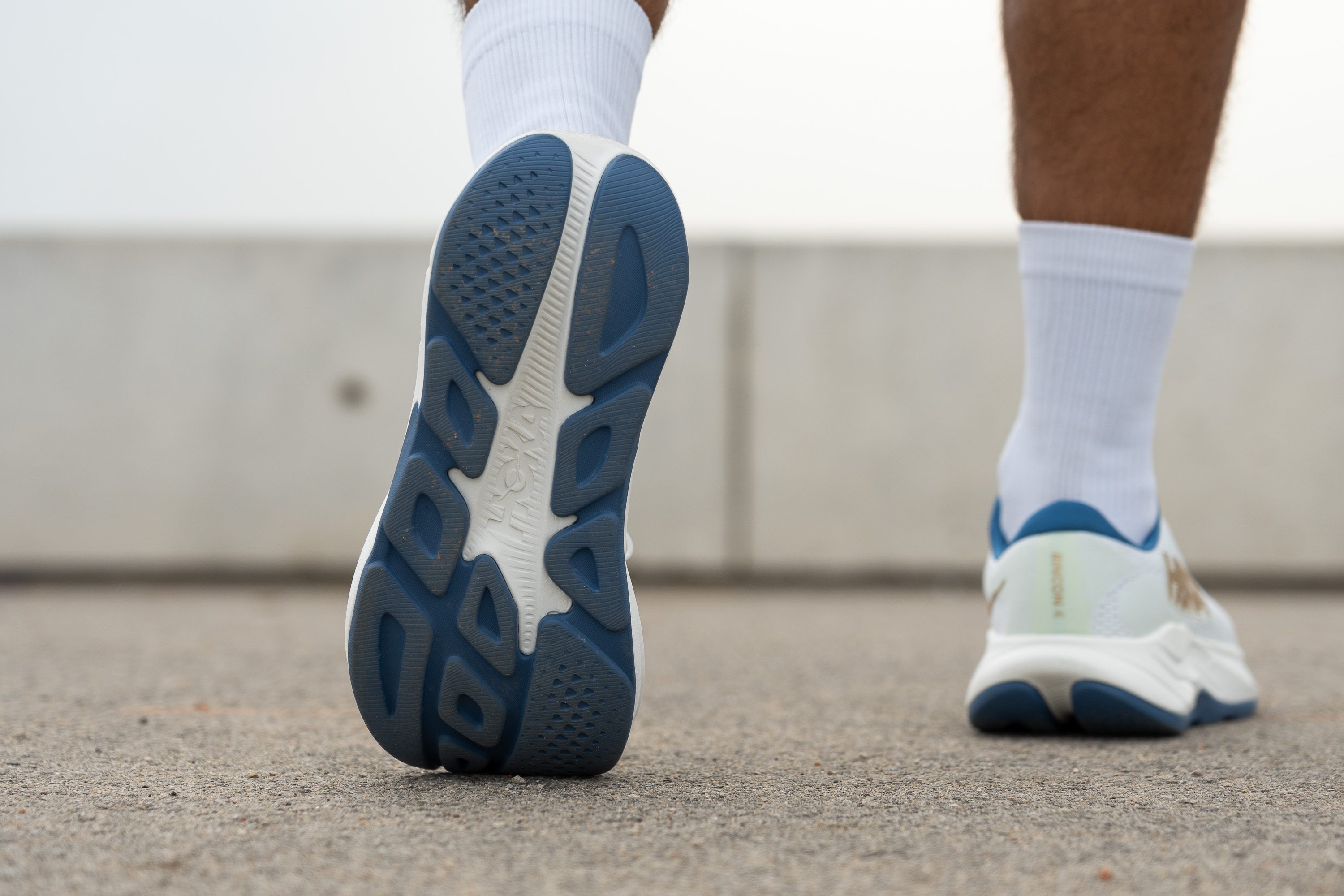
Flexibilidad / Rigidez
En nuestra prueba de flexión, las Rincon 4 necesitaron 16,1 N de fuerza para doblarse 30 grados, un resultado que está cerca de la media. Esto hace que estas HOKA sean una opción versátil para el uso diario, aunque muchos posibles usuarios podrían haber preferido un modelo un poco más flexible.

| Hoka Rincon 4 | 16.1N |
| Media | 15.3N |
Rigidez en frío (%)
Las metimos de nuevo en el congelador para reevaluar la rigidez del material, y el resultado mostró un aumento del 28,4 %, que es bastante razonable y supone una mejora notable.
| Hoka Rincon 4 | 28% |
| Media | 33% |
Peso
Además de tener una durabilidad interior a la de sus predecesoras, nos hemos encontrado con otro problema en esta nueva versión, y es que pesa más. De 208 g, ahora han pasado a los 231 g.
Aunque rondar los 230 g sigue siendo todo un récord para unas zapatillas de entrenamiento diario, más peso es más peso. Pero bueno, hemos procedido con cautela, ya que puede que este aumento esté justificado por mejoras significativas.
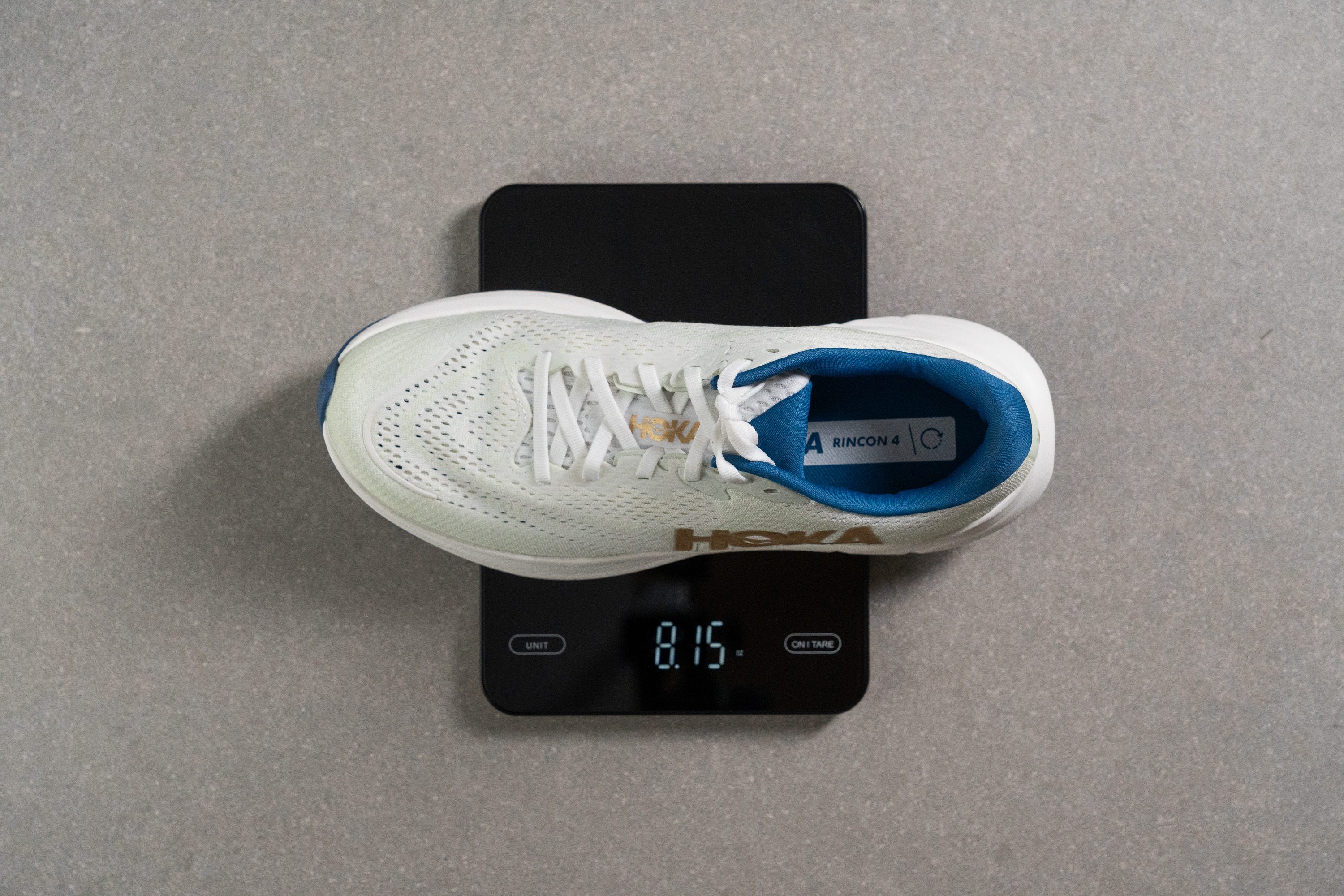
| Hoka Rincon 4 | 8.1 oz (231g) |
| Media | 9.3 oz (264g) |
Transpirabilidad
Las Rincon 3 nos demostraron tener una ventilación excelente cuando las analizamos en nuestro laboratorio, y teníamos muchas ganas de saber si las Rincon 4 mantendrían este estándar tan alto. Nuestras pruebas de humo lo confirmaron, sin duda este nuevo par conserva su excelente flujo de aire, por lo que es perfecto para los veranos calurosos y abrasadores. Vamos, que se han llevado un fantástico 5/5.
Estas zapatillas también nos impresionaron en nuestra prueba de luz, confirmando su transpirabilidad. Mientras que la parte delantera deja pasar la luz sin esfuerzo, garantizando una ventilación excelente, las secciones del mediopié y del talón tienen una estructura más resistente, proporcionando la sujeción lateral necesaria para las personas que tienen problemas de pronación leve.
Cuando cogimos nuestro microscopio, descubrimos que Hoka utilizó un material diferente al de la versión anterior para las Rincon 4.

En esta ocasión, presentan una sencilla malla de ingeniería con agujeritos para el flujo de aire en la parte delantera, mejorando así la transpirabilidad.
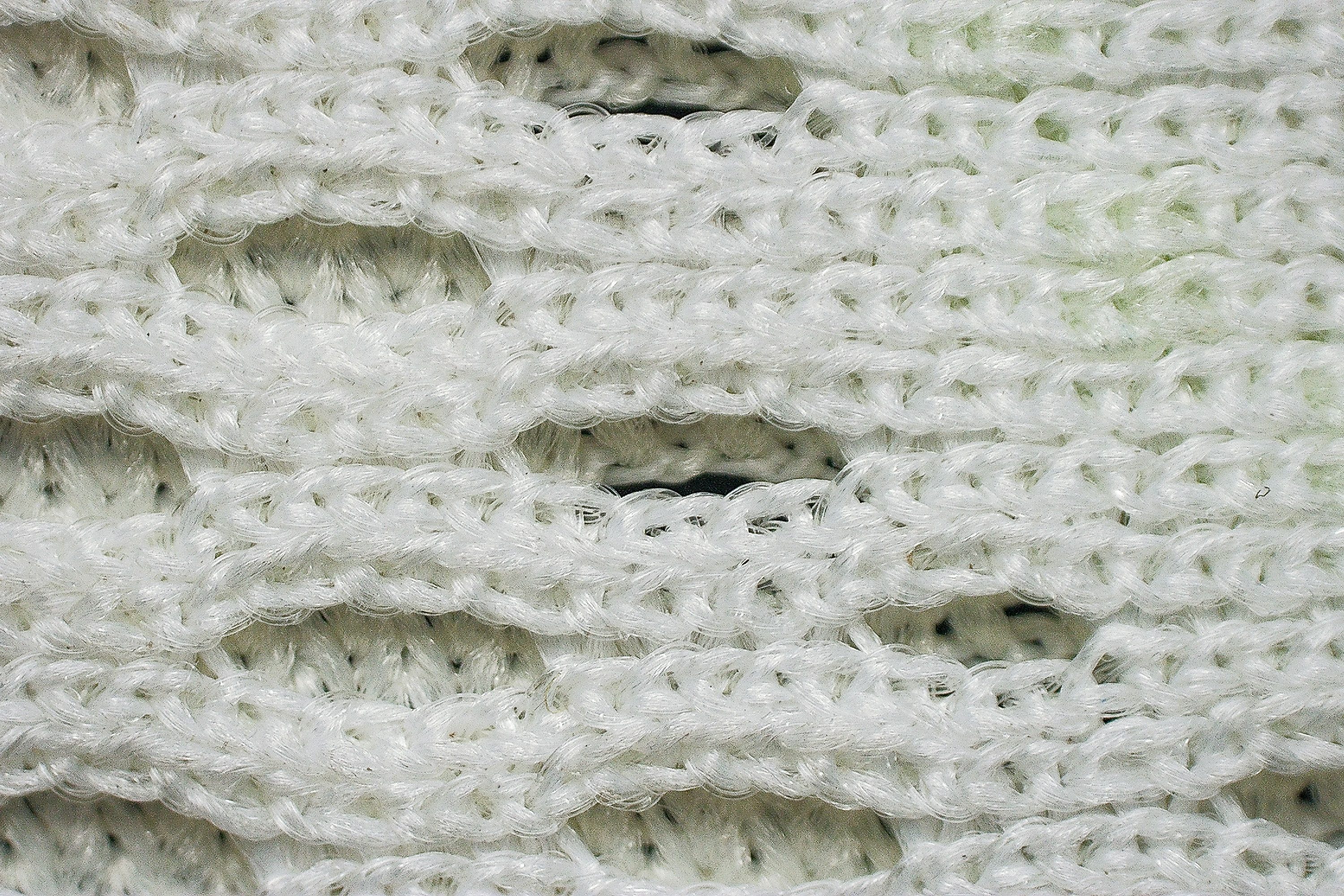
Puede que la parte superior de las Rincon 4 sea sencilla, pero destaca en cuanto a ventilación, ofrece suficiente acolchado, y no hace rozaduras.
También estamos encantados de que, como complemento a la excelente ventilación de la parte superior, Hoka incluyera una plantilla perforada, típica de los modelos de gama alta. Fue una grata sorpresa en unas zapatillas tan asequibles, la verdad.
| Hoka Rincon 4 | 5 |
| Media | 3.7 |
Estabilidad
Prueba de estabilidad lateral
En nuestra opinión, aunque se venden como unas zapatillas neutras, las Rincon 4 también sirven como un par de entrenamiento diario de estabilidad suave/leve, satisfaciendo las necesidades de bastantes corredores.
Hoka ha vuelto a alejarse de los mecanismos de estabilidad tradicionales, optando en su lugar por técnicas sutiles como las paredes laterales de la mediasuela, los recortes de la suela exterior y el rocker, que les ofrecen estabilidad de una forma más natural a cada corredor.
Rigidez torsional
Nos resultó bastante difícil doblar o retorcer las Rincon 4 con la mano, lo que nos deja claro que tienen una elevada rigidez torsional. Por lo tanto, hemos decidido darles un 4/5, así que están al mismo nivel que los modelos que cuentan con placas de nylon.
| Hoka Rincon 4 | 4 |
| Media | 3.5 |
Rigidez del contrafuerte del talón
El contrafuerte del talón de las Rincon 4 es más rígido de lo que solemos ver en las zapatillas de entrenamiento diario, una característica que encaja bien con el uso para el que están pesadas. Sin embargo, el 4/5 que se llevó en esta prueba hace que no sean tan rígido como el de las Hoka Skyward X, y estamos muy agradecidos.
| Hoka Rincon 4 | 4 |
| Media | 2.9 |
Anchura de la mediasuela - antepié
Hemos utilizado nuestro calibre digital para medir las dimensiones de la mediasuela de las Rincon 4, empezando por el antepié. Ahí descubrimos una de las razones del aumento de peso con respecto a la tercera versión, y es que ahora son más anchas en esta zona, llegando a los 116,3 mm frente a los 113,2 mm anteriores.
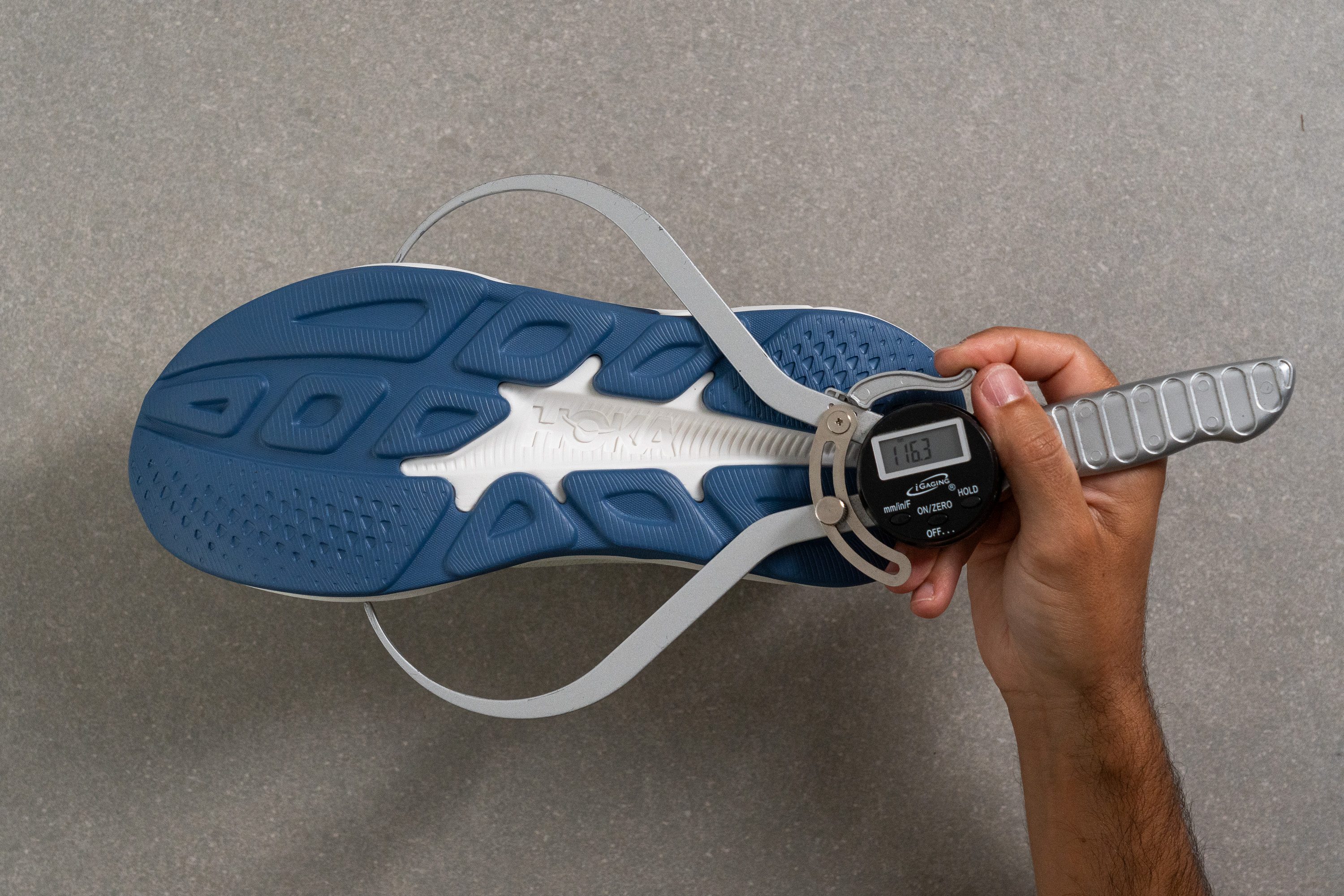
| Hoka Rincon 4 | 116.3 mm |
| Media | 114.4 mm |
Anchura de la mediasuela - talón
Aquí hay otra mejora importante de diseño en este modelo. Los 97,0 mm de anchura en la zona del talón, sumados a un mediopié increíblemente ancho, hacen que esta nueva versión sea más estable y ofrezca una sukeción excelente para los talonadores y los corredores de mediopié.
Esta característica proporciona eficazmente la cantidad justa de sujeción, ayudando a estos corredores a mantener una pisada más neutra con facilidad.
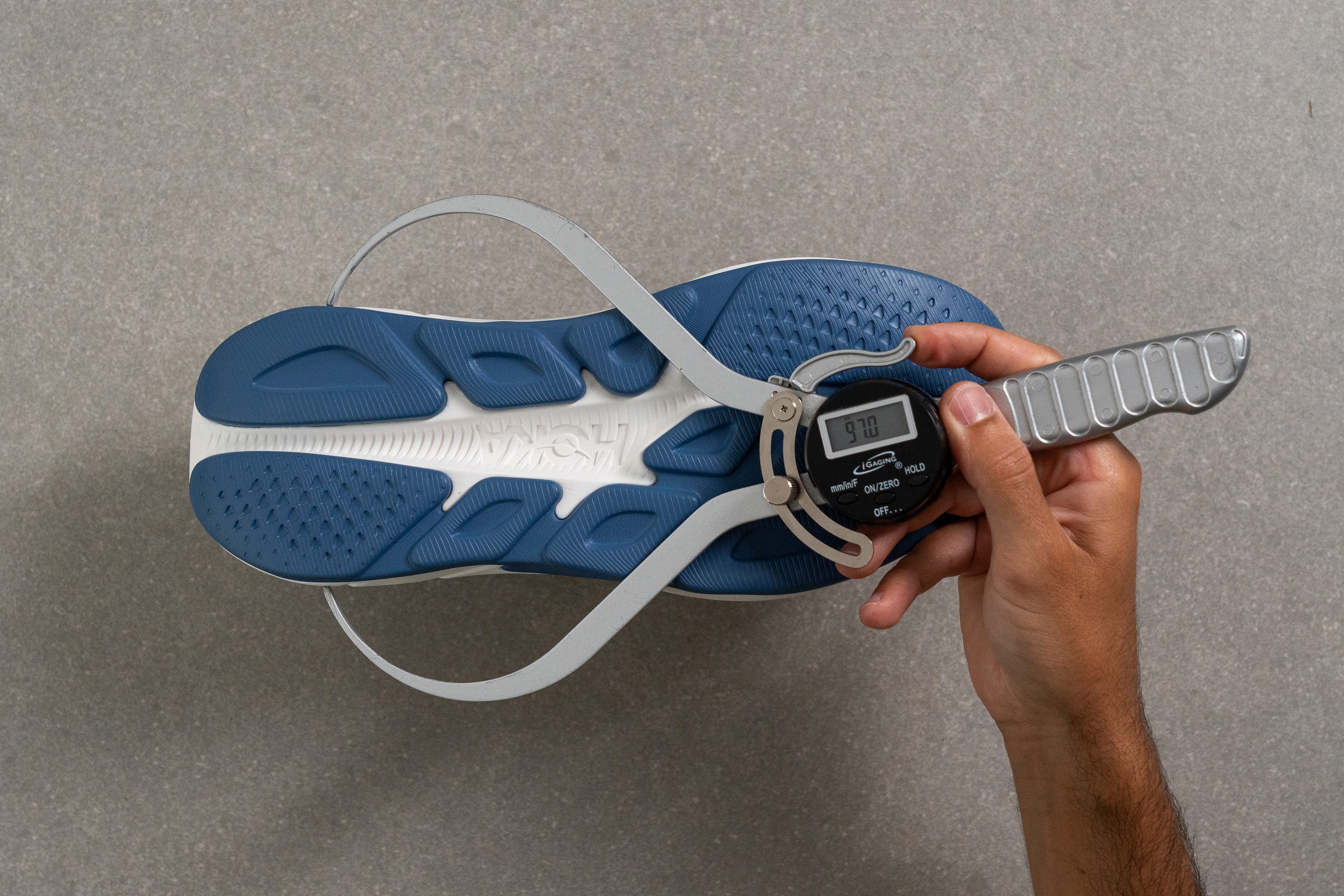
| Hoka Rincon 4 | 97.0 mm |
| Media | 90.7 mm |
Durabilidad
Durabilidad de la parte delantera
Como la parte superior de las Rincon 4 es muy finita, nos esperábamos un resultado un poco regular en nuestra prueba Dremel, pero no... algo tan terrible, la verdad.
Cuando la herramienta terminó de girar, vimos que las zapatillas tenían un pedazo de agujero en su parte superior, así que no pudimos darles más de un 1/5 en nuestra prueba de durabilidad.
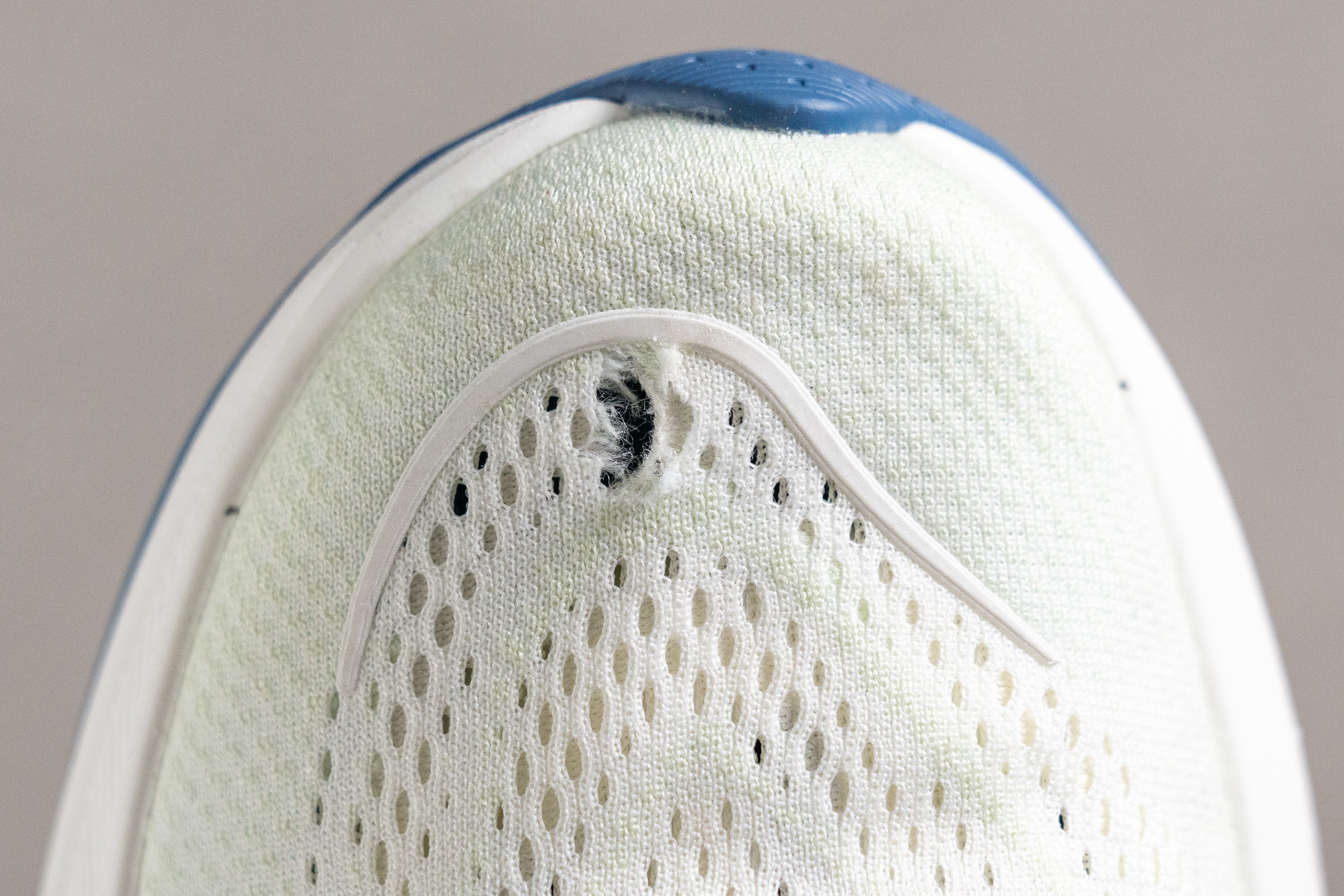
| Hoka Rincon 4 | 1 |
| Media | 2.6 |
Durabilidad del acolchado del talón
Cuando nos centramos en el acolchado del talón vimos que, aunque el resultado no podía ser peor que el de la parte delantera, una pequeña mejora seguiría siendo insuficiente.
Y así fue, con una puntuación de tan solo 2/5, está muy por debajo de la media, y la verdad es que esto nos hace replantearnos la durabilidad de las Rincon 4.
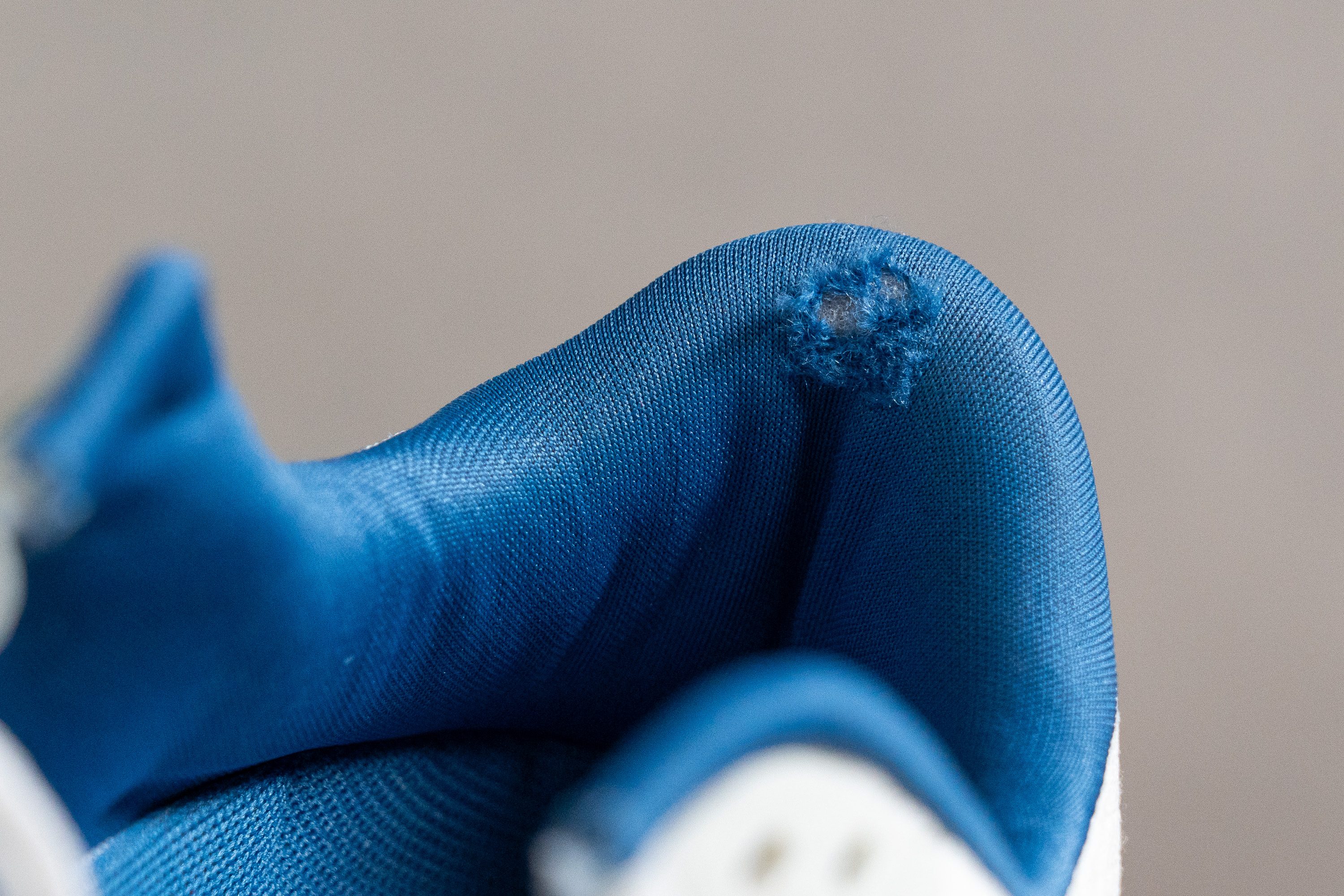
| Hoka Rincon 4 | 2 |
| Media | 3.4 |
Dureza de la suela
Estas Hoka cuentan con una suela exterior de EVA encauchada, que es algo que solo hemos visto en unos pocos modelos, como las ASICS Cumulus 26. Las preocupaciones por la durabilidad suelen ser el motivo por el que este material no se ve mucho en las zapatillas.

A ver, entonces, ¿qué es exactamente una suela exterior de goma encauchada? Pues, básicamente, es un híbrido entre una mediasuela de EVA y una suela exterior de caucho estándar. Su composición es más blanda (55,8 HC), proporcionando incluso un buen retorno de energía y un buen agarre. Sin embargo, normalmente se queda corta en términos de durabilidad, pero eso se lo vamos a preguntar a nuestro Dremel.
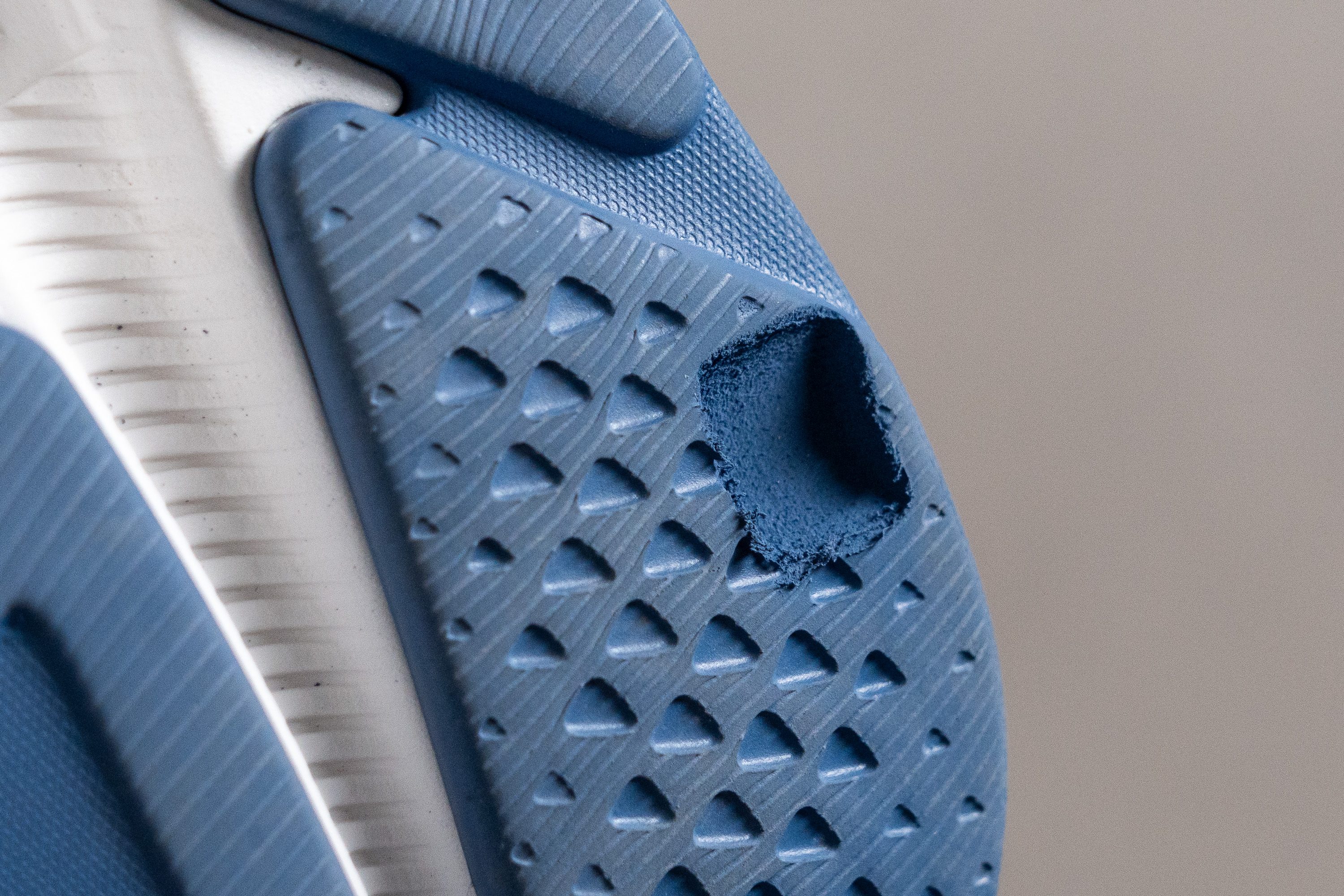
| Hoka Rincon 4 | 55.8 HC |
| Media | 79.2 HC |
Durabilidad de la suela
Desafortunadamente, como ya nos imaginábamos al ver lo blando que es el material, nuestro Dremel destruyó casi por completo la suela exterior.
Madre mía, que terminasen con unos daños de 6,5 mm hace que estén entre las zapatillas que peor lo han pasado en nuestro laboratorio. ¿Que si nos sorprende? Pues para nada, la verdad. De hecho, es típico de las suelas exteriores de EVA encauchada. Aunque ofrecen ventajas como una pisada más fluida, les falta mucha durabilidad.

| Hoka Rincon 4 | 6.5 mm |
| Media | 1.1 mm |
Grosor de la suela
La suela exterior tiene un grosor excepcional de 6,6 mm, más del doble que la media.
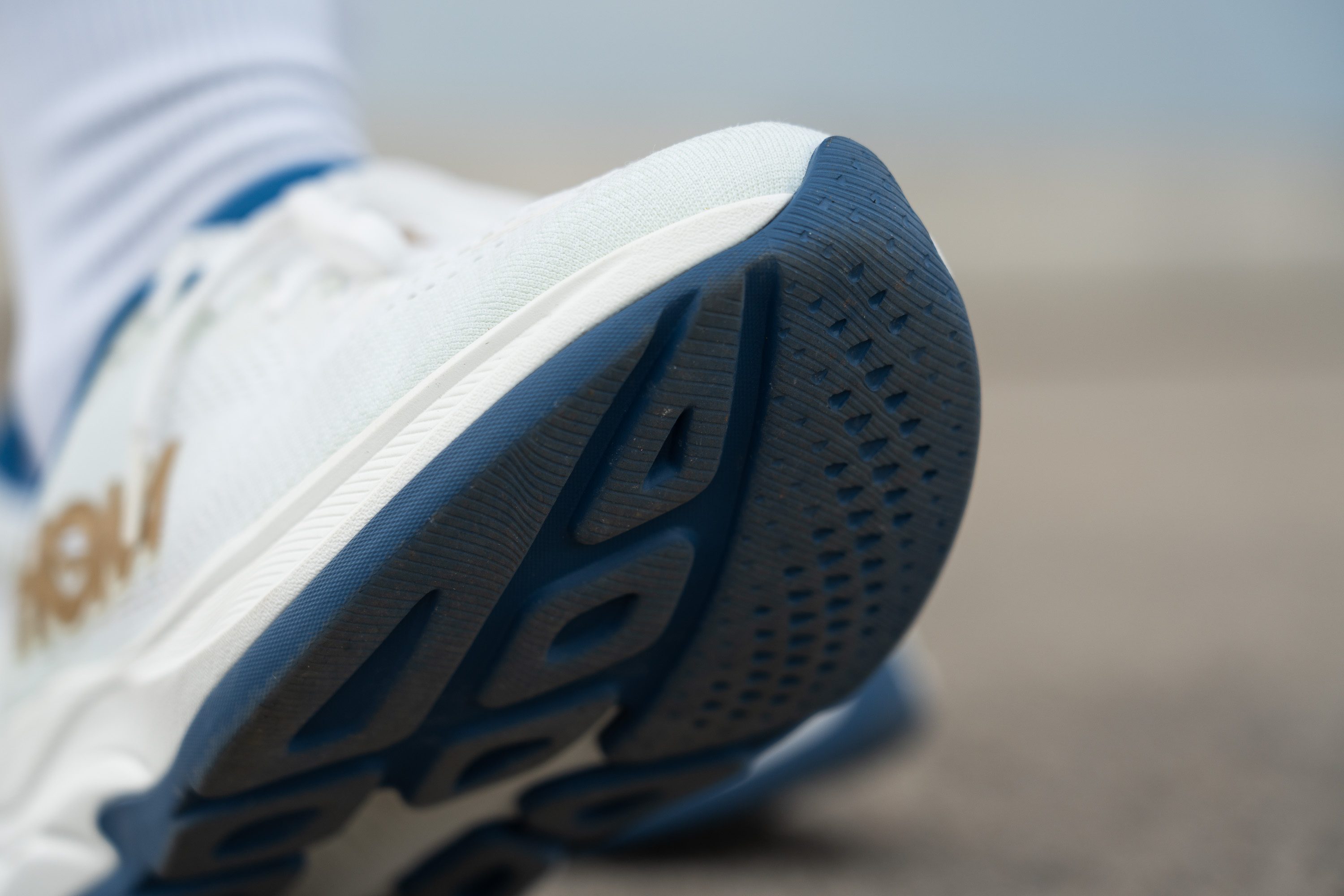
Este mayor grosor es esencial para compensar la falta de durabilidad inherente del material. Es un ajuste de diseño inteligente y necesario en comparación con casi cualquier otro modelo de running.
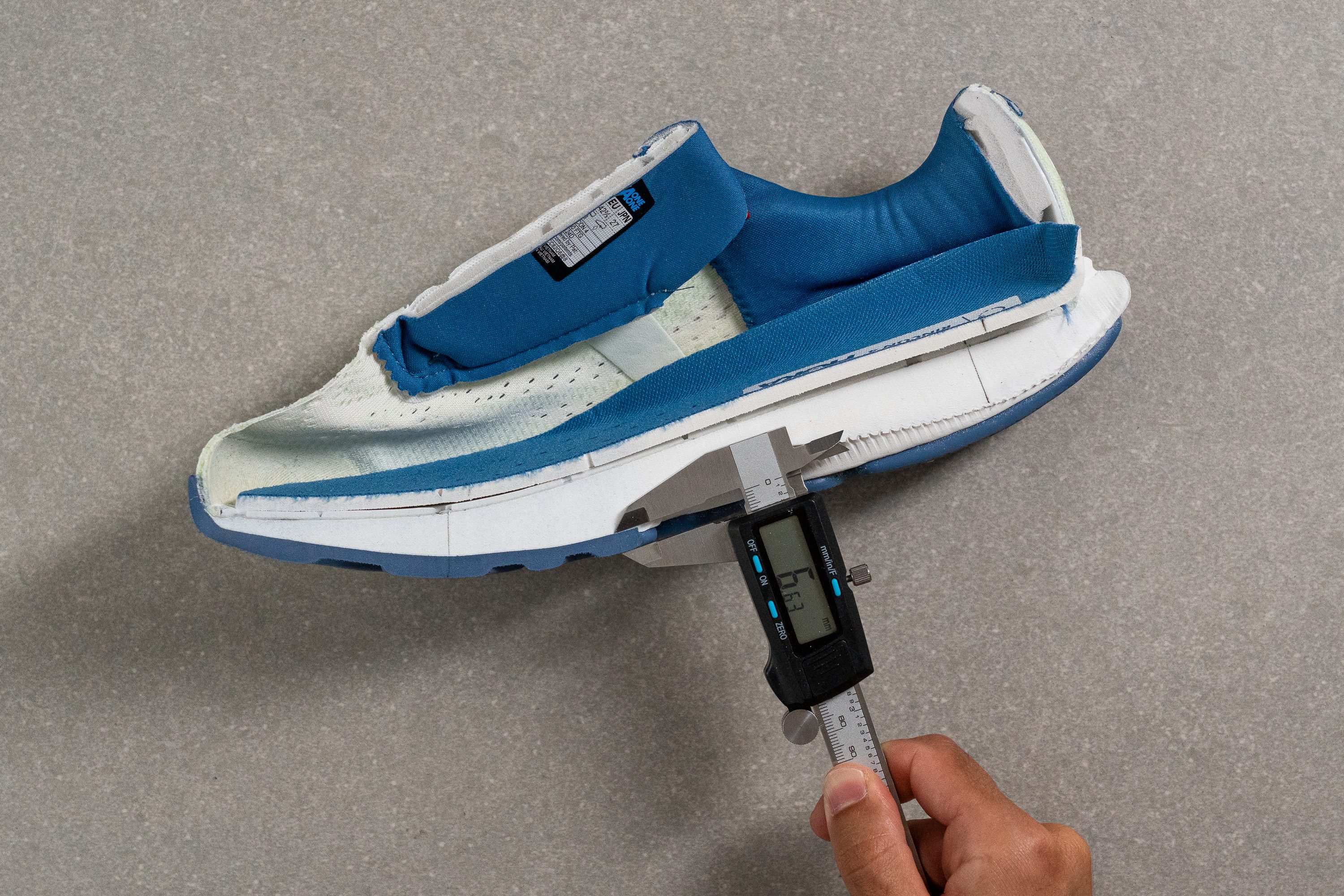
| Hoka Rincon 4 | 6.6 mm |
| Media | 3.2 mm |
Varios
Grosor de la plantilla
La plantilla está hecha de EVA y es bastante estándar. Sus 4,8 mm de grosor la hacen cómoda, y está muy cerca de la media.
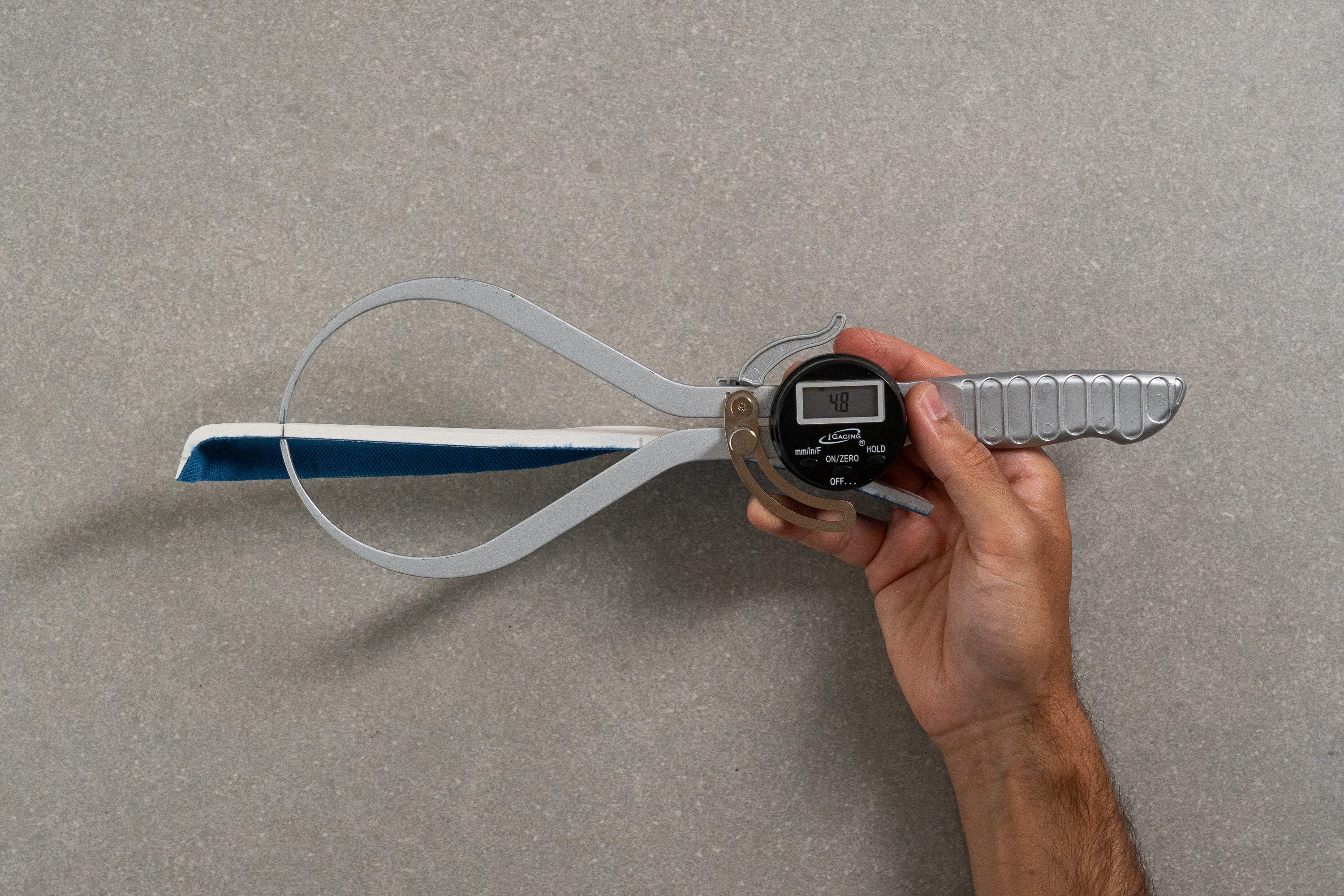
| Hoka Rincon 4 | 4.8 mm |
| Media | 4.5 mm |
Plantilla extraíble
No tuvimos ningún problema al quitarles la plantilla original a las Rincon 4, y tampoco nos dio la lata ponerles otra de otras zapatillas.
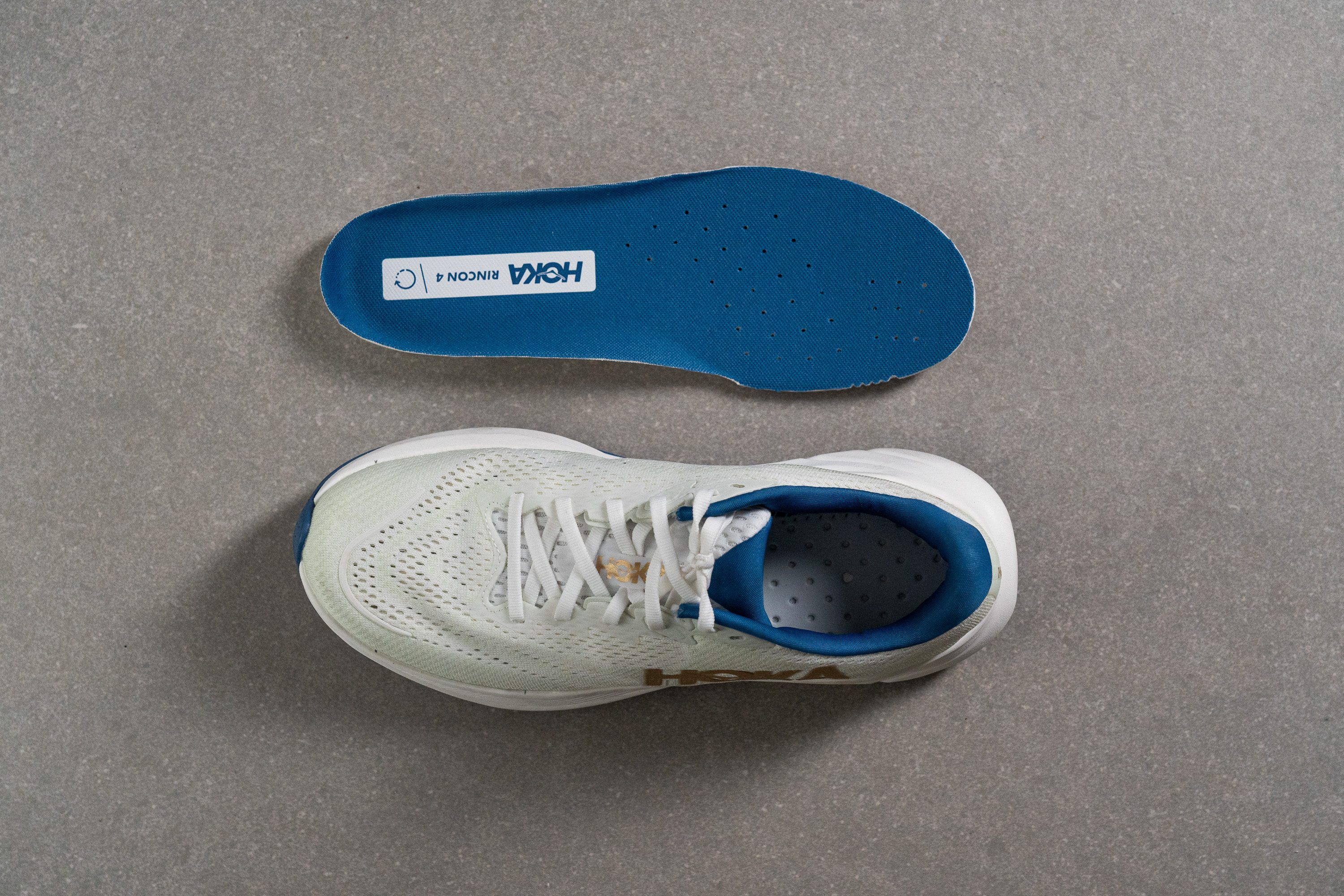
| Hoka Rincon 4 | Sí |
Rigidez de la mediasuela en frío (%)
Aunque la mediasuela de las Rincon 4 supone un verdadero avance con respecto a la de las Rincon 3, sigue estando fabricada con EVA. Este material, siguiendo lo que hemos comprobado en nuestro laboratorio, tiene un rendimiento bastante más bajo en temperaturas frías. Nuestras pruebas revelaron que esta mediasuela se volvía un 43,9 % más firme cuando hacía frío.
Este cambio drástico, sumado a la parte superior súper transpirable de estas zapatillas, hace que las Rincon 4 sean una mala elección para las personas que viven en zonas con inviernos fríos.
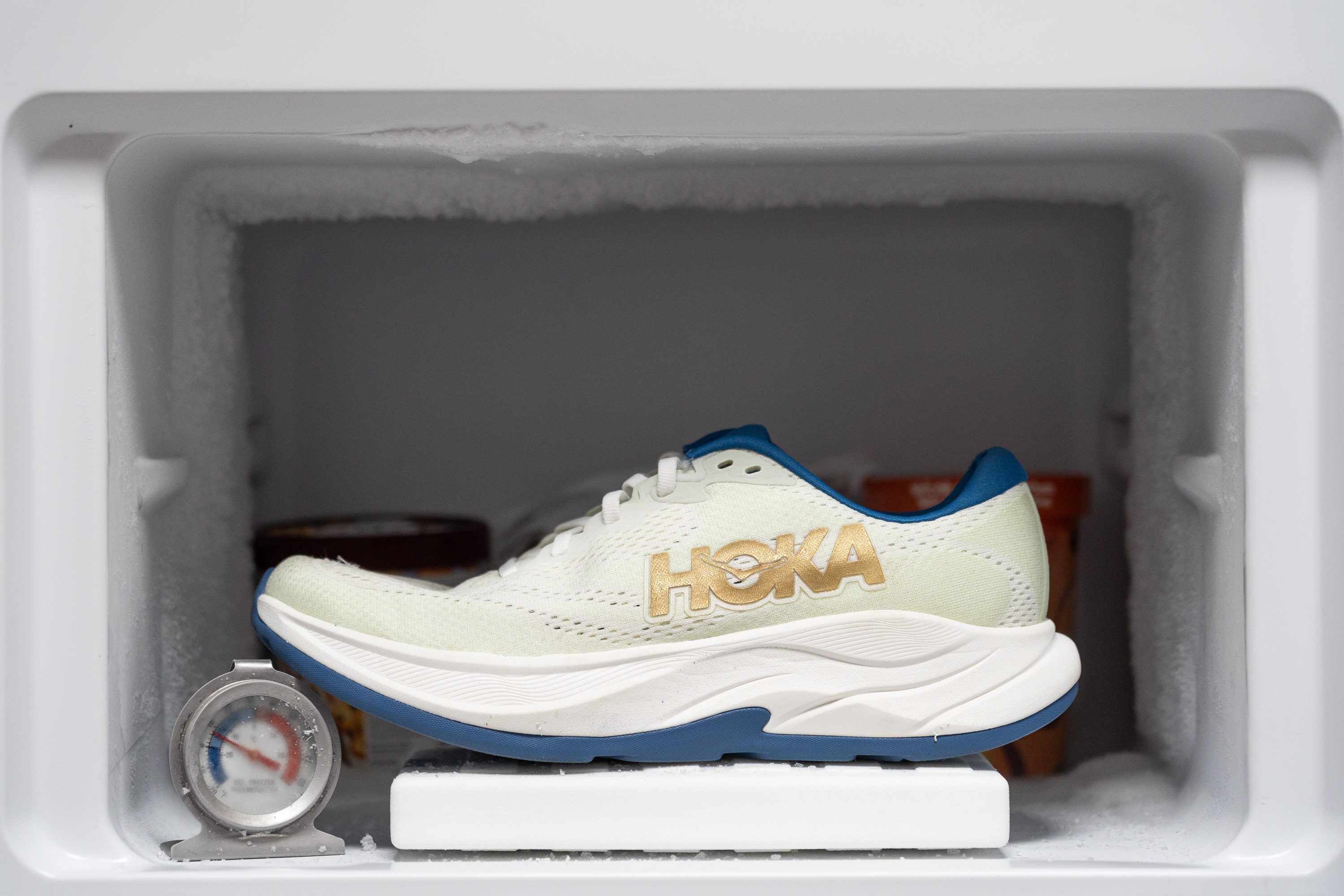
| Hoka Rincon 4 | 44% |
| Media | 24% |
Elementos reflectantes
Vale, mucho ojo con esto porque, aunque nos sorprendió que Hoka no incluyese elementos reflectantes en sus modelos más caros, como las Skyward X, estamos encantados de decirte que las Rincon 4 sí los tienen.
| Hoka Rincon 4 | Sí |
Acolchado de la lengüeta
El acolchado de la lengüeta mide 6,7 mm, que es una cifra que nos parece ideal para unas zapatillas de entrenamiento diario, ya que no es ni demasiado fina ni excesivamente acolchada, evitando así un peso extra innecesario.
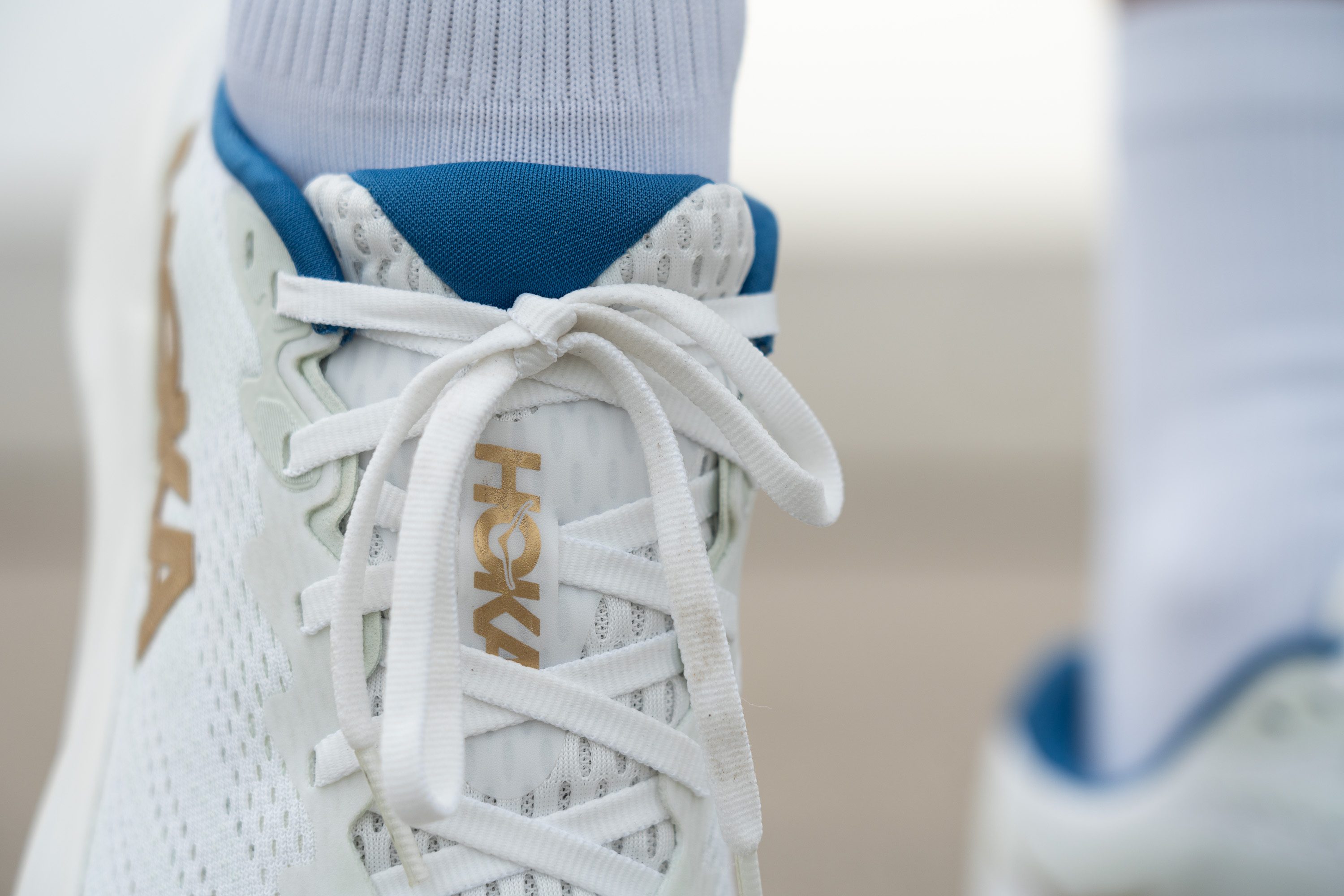
También estamos muy contentos el sencillo sistema de cordones de las Rincon 4. Tienen ojales perforados, y no cuentan ni con lazos ni con cables, como otros modelos de running. Funciona a la perfección, que al final es lo que cuenta.
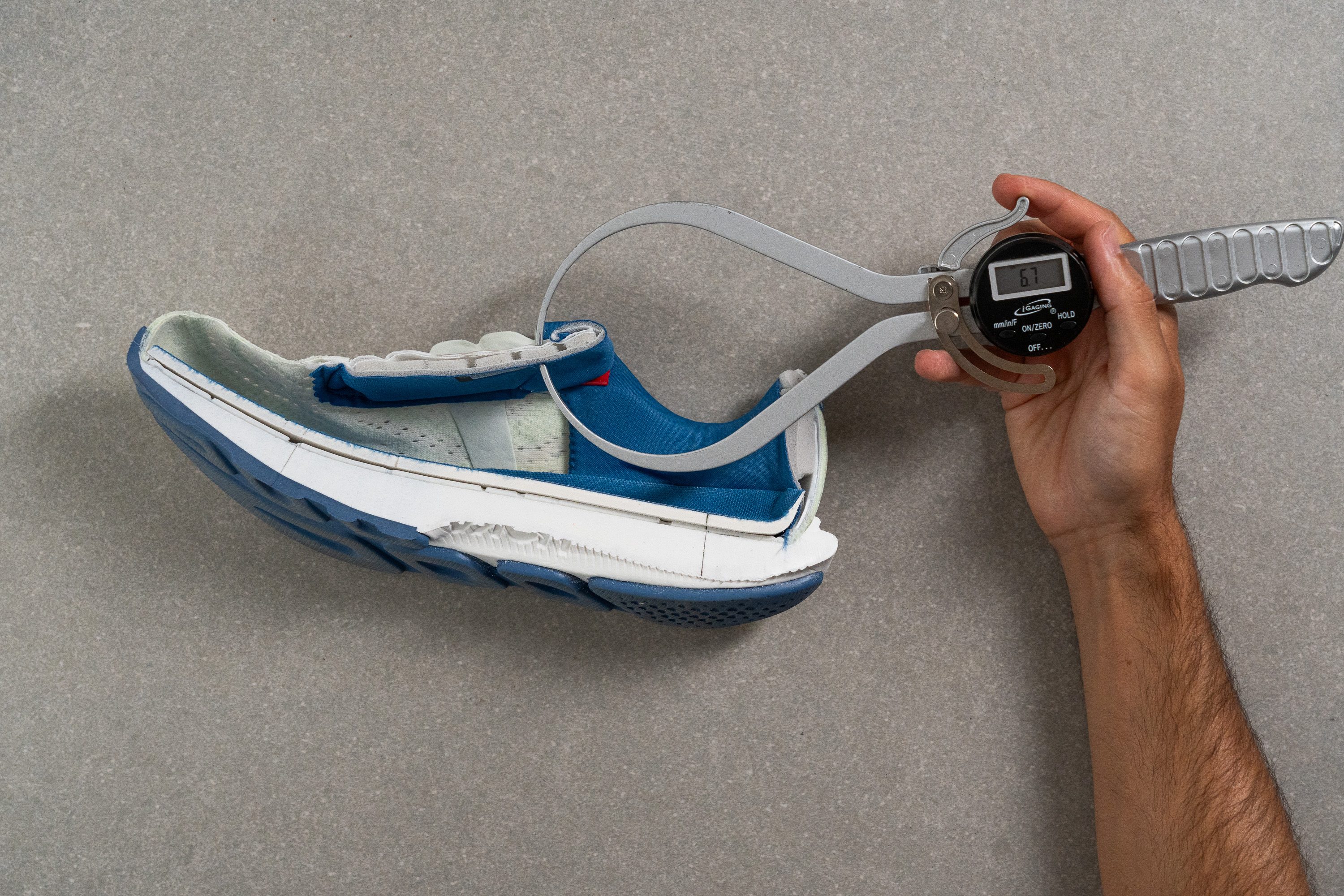
| Hoka Rincon 4 | 6.7 mm |
| Media | 5.8 mm |
Lengüeta: tipo de refuerzo
Es una pena que este modelo no tenga una lengüeta reforzada, que es una característica que habría mejorado mucho su cierre. Pero bueno, con el precio que tienen, la verdad es que tampoco es que nos esperásemos que la marca añadiese este detalle.
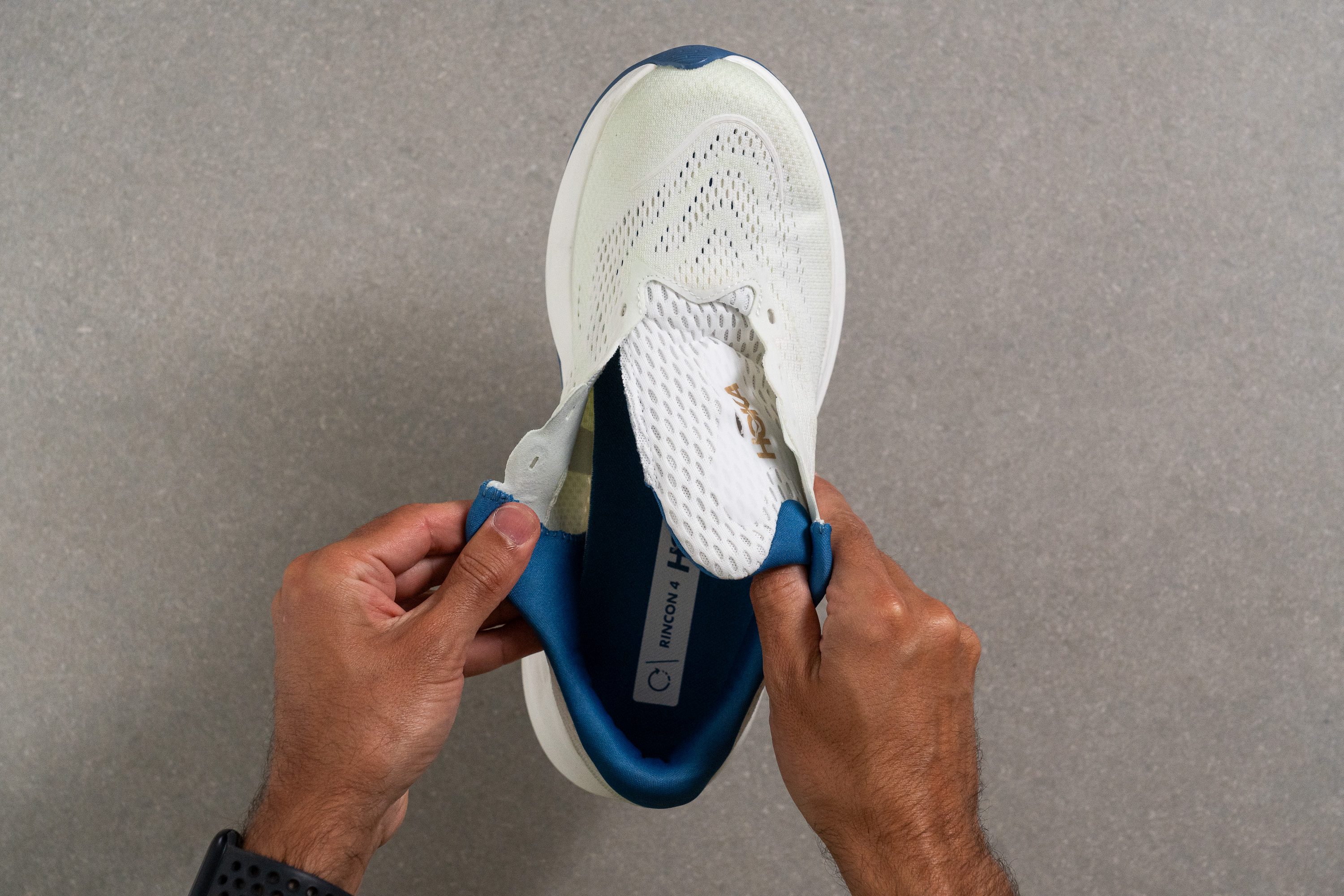
| Hoka Rincon 4 | Ninguno |
Tirador del talón
Las Rincon 4 no tienen ni tirador ni el cuello extendido que hemos visto en muchos otros modelos de Hoka. Creemos que esta elección de diseño hace que reafirmen su posición como una opción para principiantes dentro de la línea de Hoka.
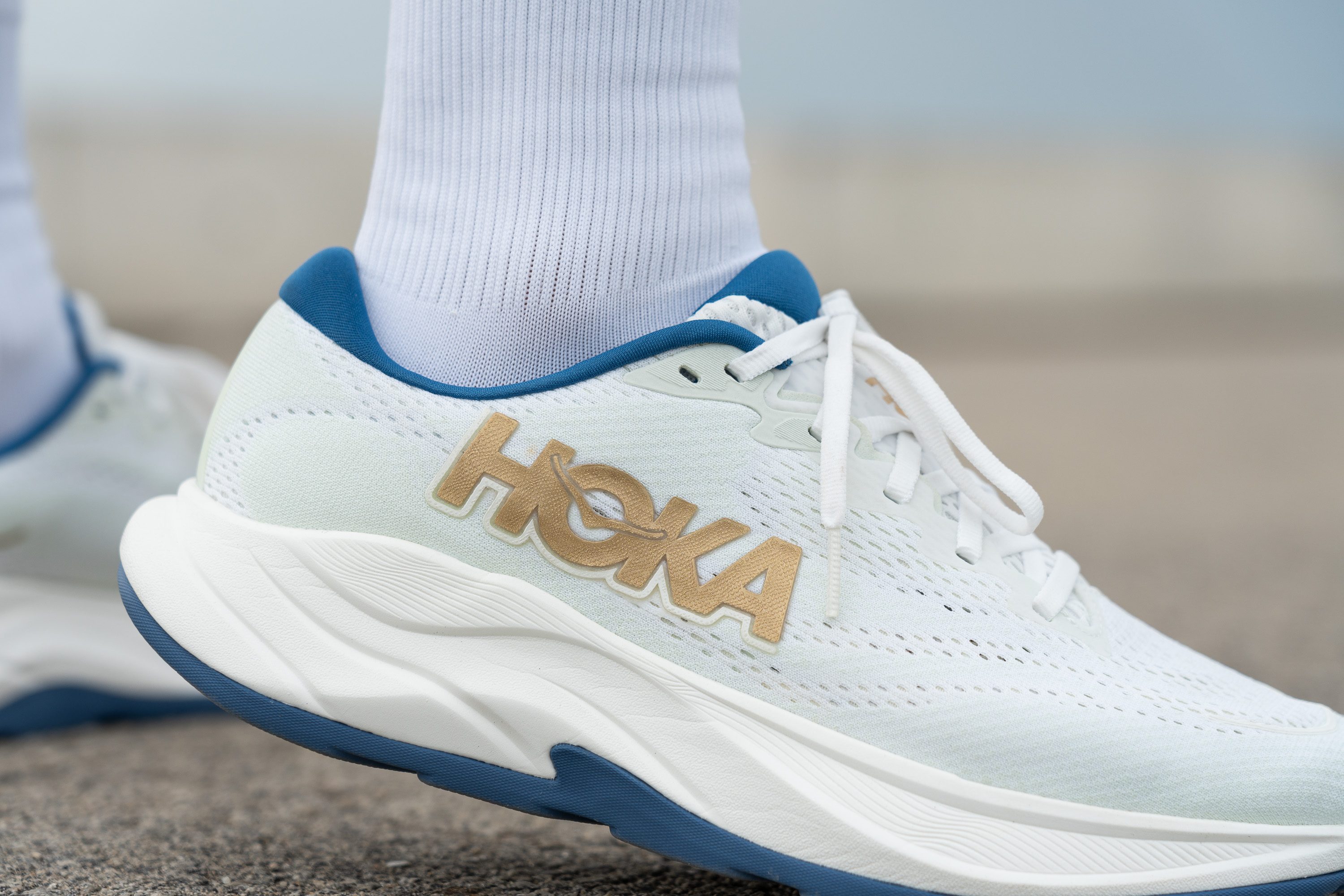
| Hoka Rincon 4 | Ninguno |

